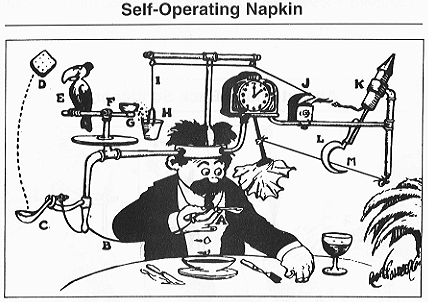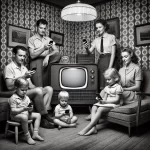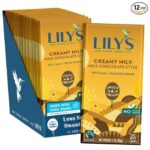Did you Achieve Your Goals in 2015? You start each year with unbridled enthusiasm and a game plan. 2015 was the year you expected to take share from your competitors or enter a new market. You had many new products that your team introduced and a spanking new ad campaign to get the word out. Your staff went through extensive training and appeared properly motivated. You had all our ducks in a row.
But somehow you failed to achieve the 2015 goals.
Quack! What went wrong?
Sometimes the simple truth is that the marketplace for your product or service is always changing. What seemed like the right need for the market when you created your new product pipeline, may have already started to shift in a new direction. Your products and approach may have made sense from within the office, but twelve months later, when you go out to sell, it falls flat. We don’t need to create a Rube Goldberg contraption to use a napkin. What we need is frequent feedback from customers.
A Continuous Feedback Loop
Brands need an endless feedback loop that helps that adjust and keep recalculating. Those six features that were so important last year when your product development began to require reprioritization. You need the benefit of a minimal viable product model to help you keep reaffirming market needs.
Markets Shift Because of Competition
Brands need a continuous feedback loop because while you are creating your new offering, your competitors have introduced something that changes the equation with those customers. When you competitor now offers three new features for free that you had planned to charge for, the equation changes. When the competition opens up a huge manufacturing site and needs to fill it, pricing pressures emerge. It should be no surprise that most markets are moving faster and competition is coming from inside and outside of your category. Ask a taxi driver if she saw Uber coming or ask Hilton if they predicted AirBnB as a competitor.
Shorter Development Cycles
Today companies like P&G, GE and others are using methods to strip bare product offerings so that they can be more fluid in entering markets with new products. They cut development time dramatically by keeping to simpler less complicated offerings.
If you are introducing new products in 2016, here are a few suggestions to help with the launch.
- Eliminate most of the new product offerings. Constantly simplify and focus your teams.
- Focus on just one or two product launches that have the strongest opportunities to solve critical customer problems. Work on A level needs.
- Scale back features so you can get it into customers hands faster. Customer in B2B and B2C crave simple solutions, not complicated ones.
- Resist flexing your own technical muscles. You aren’t there to prove what cool stuff you can make. You are there to solve customer’s problems.
- Only add more features and complexity if customers show significant evidence of demand and a willingness to pay more. Score each feature to make sure you aren’t adding more than customers need to your offering.
- Create a better feedback loop mechanism with your new product team and customers so that everyone is solving the same obvious problem with the simplest solution
- Hit singles and doubles – stop swinging for the fences for home runs
Your Own Loop
The best evidence of how important it is to have a continuous loop is your experiences with product and services. Next time you pick up a rental car. buy a pair of sneakers or order take-out from a restaurant ask yourself this question: have they made things easier or more complicated for you? Do they offer new products or services that help you solve your problem or do they make things more difficult for you? If you had been asked, what would you have advised they do differently that could have made the process smoother. Starbucks introduces an app so you can avoid the line. Simple. Focused. Problem-solving product.
Have they made things easier or more complicated for you to buy from them then it was last year?
There is a restaurant I like to eat at and the owner always asks as I’m leaving, what could we have done differently or better to improve your dining experience today? With almost every customer, every day, he asks for feedback to understand how to get better.
Are you this close to your customers after they tried the special?
______________
Need help creating a loop with your customers? Connect with me here and let’s talk.
By Rube Goldberg (an old comic book) [Public domain], via Wikimedia Commons




